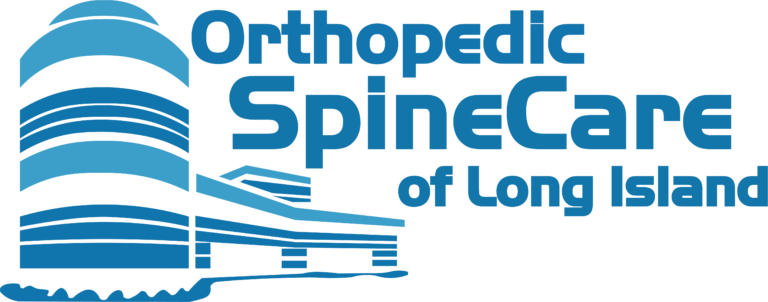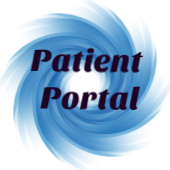Welcome To OSCLI | Radiology in Huntington NY

Orthopedic Spine Care of Long Island was established in 1999 to provide comprehensive care to patients with back and neck disorders covering the entire Long Island area. Many disorders are treated with non-operative and minimally invasive pain management approaches; but when indicated, surgical intervention is available. Minimally invasive surgery or major reconstructive surgery is performed depending on the specific problem. All care is tailored to the patient’s specific needs. This center provides excellent care by virtue of possessing the latest in modern radiographic technology including X-Ray, MRI, and CT Scan and performing the most up-to-date procedures during surgical intervention. We are able to maintain high standards of excellence by providing community service through education and personal leadership. Visit our Radiology in Huntington NY today with our board-certified medical group!
Radiology in Huntington NY
At Orthopedic Spinecare of Long Island, we provide a wide range of in-depth radiological examinations. Radiology is the branch of medical science that specifically utilizes various forms of high radiant energy to diagnose and treat a range of diseases properly. X-rays, CT scans, and MRIs are just some of the more common radiological tests that make up this highly beneficial and advanced field of medical care.
X-Ray
This type of testing uses electromagnetic waves to create internal pictures of the body. Since different parts of the body absorb different amounts of radiation, x-rays will come off as black and white. The calcium in bones absorb the higher amounts of radiation, and show up white while soft tissue and organs appear dark grey. Because of this, x-rays are most commonly used to screen broken bones. However, the procedure still has the ability to spot other, more serious conditions such as pneumonia or breast cancer in the chest. X-rays can also help doctors investigate:
- Diagnose a bone fracture
- Diagnose a joint dislocation
- Provide guidance for orthopedic surgeries including fracture reductions, joint replacement, and spinal repair and spinal fusions
- Diagnose injury, arthritis, abnormal bone growth, or infection
- Locate any foreign objects
- Detect bone cancers
- Monitor proper healing and stabilization of bone fractures
Fluoroscopy is a special variant of x-ray imaging that focuses on capturing an internal portion of the body in motion. Put in simpler terms, this “X-ray movie” is made possible by projecting a continuous x-ray beam through the patient. In some cases, the patient will ingest a liquid compound that absorbs x-rays- making it visible on screen- to simulate movement throughout the digestive tract. Everything the fluoroscopy captures is transmitted to a monitor in real time. From there, a radiologist will then assess the data.
CT Scan
Also known as a computerized tomography scan, this imaging technique compiles x-ray results taken from numerous angles to develop cross-sectional views of internal structures such as bones, blood vessels, and soft tissue. Since CT scans offer a more detailed report than x-rays, they’re used for more high-priority examinations. CT scans can pinpoint and detect:
- Muscle and bone disorders
- Tumors
- Blood clots
- Heart disease
- Internal bleeding
Aside from diagnosing, CT scans can also analyze the effectiveness of ongoing treatment procedures for diseases such as cancer.
MRI
When previous scans fail to provide a healthcare provider with a complete picture, an MRI is usually scheduled as a reasonable follow up. MRI stands for Magnetic Resonance Imaging. Its name comes from using a magnetic field in conjunction with pulses of radio waves to develop highly detailed illustrations of the body’s internals that other imaging methods struggle with. The magnetic field and radio waves help produce clearer pictures and provide a more dramatic contrast between normal and abnormal tissue structures, making it easier for an expert to diagnose. Because of this, MRIs are mostly recommended when dealing with vital complications in the brain, spine, neck, and chest.
Contact Us For Radiology Huntington NY
Understanding Ultrasound: Common Uses and Benefits
Ultrasound imaging, also known as sonography, is a non-invasive diagnostic tool that uses sound waves to produce images of organs, tissues, and blood flow within the body. It is a safe and effective way to diagnose and monitor various medical conditions. Here we will discuss the common uses and benefits of ultrasound imaging at Orthopedic Spine Care of Long Island for huntington radiology.
What is Ultrasound Imaging?
Ultrasound imaging is a medical imaging technique that uses high-frequency sound waves to produce images of internal organs, tissues, and blood flow. During the procedure, a trained technologist or radiologist applies a gel to the skin and then places a transducer over the area being examined. The transducer emits sound waves that bounce back from the organs and tissues and create an image on a computer screen.
Common Uses of Ultrasound Imaging
Ultrasound imaging is used to diagnose and monitor a variety of medical conditions, including:
- Pregnancy: Ultrasound is used to monitor the development of the fetus, check the baby’s health, and confirm the due date.
- Abdominal Issues: Ultrasound can detect issues with organs such as the liver, gallbladder, pancreas, and kidneys.
- Breast Issues: Ultrasound can detect abnormalities in the breast such as cysts, masses, or other suspicious growths.
- Cardiac Issues: Ultrasound can be used to examine the heart and diagnose conditions such as heart disease or aortic aneurysm.
Benefits of Ultrasound Imaging
- Non-Invasive: Ultrasound imaging is non-invasive, which means that there is no need for incisions or needles, making it a safe and painless diagnostic tool.
- No Radiation: Unlike other medical imaging techniques such as X-rays or CT scans, ultrasound does not use radiation to produce images, making it a safer option, especially for pregnant women.
- Real-Time Imaging: Ultrasound produces real-time images, allowing physicians to see the internal structures and blood flow in real time, which can help with the diagnosis of medical conditions.
- Cost-Effective: Ultrasound is generally less expensive than other imaging techniques, making it more accessible to patients.
Ultrasound Imaging at OSCLI Radiology in Huntington NY
At Orthopedic Spine Care of Long Island, we offer state-of-the-art ultrasound imaging services to diagnose and monitor various medical conditions. Our team of experienced and highly skilled radiologists is dedicated to providing personalized care to our patients. Contact us to schedule an appointment with our radiology team in Huntington NY.
What Is Myelopathy?
The spinal cord is a crucial component of the human body; without it, the brain and body would be unable to interact. When an injury has occurred, it is recommended that you pursue medical attention as soon as possible. By visiting Orthopedic Spine Care of Long Island, for diagnostic imaging Huntington NY, for a consultation with our doctors, you can begin improving and treating your condition right away to get you on the path to recovery.
What Is Myelopathy?
The spinal cord acts as a channel for impulses traveling from the body to the brain and from the brain to the body. When any part of the spinal cord is constricted or squeezed, it cannot function properly, and myelopathy occurs. This can result in pain, numbness, or difficulty shifting specific parts of the body.
Components of the Spinal Cord
To understand the complications of spinal cord injuries, it is important to know the anatomy of the spinal cord. The spinal cord is divided into three sections: the neck, chest, and lower back. Additionally, three layers of tissue protect the spinal cord known as the meninges. The spinal bones extend from the skull down to the pelvis, covering the spinal cord and the tissues.
Causes of Myelopathy At OSCLI Radiology in Huntington NY
Since the role of the spinal cord is so important in providing movement and feeling, damage to any part of the spinal cord can result in permanent changes in a person’s functioning. An injury that results in myelopathy may be a severe impact on the spinal cord or other traumas. Myelopathy typically develops gradually as a result of the spine’s gradual degeneration. Therefore, if an issue in the spinal cord arises, it is important to make an appointment for medical imaging Huntington NY, at OSCLI. Here are more causes of myelopathy and other spinal cord injuries:
- Spinal Stenosis: A degenerative spinal condition where the bone passageways narrow making it difficult for the nerve roots to travel.
- Central Disc Herniations: Where a disc protrudes through the spinal cord and compresses it.
- Autoimmune Disorders: Rheumatoid arthritis in the spine, for example, can cause degenerative changes in the vertebrae, resulting in spinal cord compression and myelopathy.
- Hernias, cysts, hematomas, spinal tumors, and bone cancer can also cause myelopathy.
Contact OSCLI Radiology in Huntington NY!
Book an appointment with us if you have taken a fall, gotten hit, or are just experiencing pain in your back. Visit our imaging center in Huntington NY at Orthopedic Spine Care of Long Island, for a consultation today!
What is Dysmenorrhea
Dysmenorrhea, also known as painful periods or menstrual cramps, is a common symptom experienced during menstruation. It is typically characterized by pain in the lower abdomen and can range from mild to severe. Pain can be one-sided or spread throughout both sides of the stomach and pelvic and back pain. Some additional symptoms may include nausea, vomiting, headache, and diarrhea. It is also common to have a decreased appetite or fatigue during this time. If you have been dealing with this, contact Orthopedic Spine Care of Long Island. We are the most proficient Radiology in Huntington NY.
Although the cause of dysmenorrhea is not always known, it can be caused by uterine contractions in response to prostaglandins released during menstruation. These hormones are generally released to help expel the uterine lining but can generate muscular contractions that lead to pain. Other possible causes include endometriosis or pelvic inflammatory diseases.
Treatment
Treatment for dysmenorrhea depends on the severity of symptoms and underlying cause. Non-steroidal anti-inflammatory drugs (NSAIDs) like ibuprofen and naproxen, as well as physical therapies such as hot baths and exercise, can help reduce pain intensity. For more severe cases, other medical interventions may be needed. Visit the website of Orthopedic Spine Care of Long Island if you have been looking for Radiology in Huntington NY.
Taking steps to manage dysmenorrhea symptoms better is essential for overall health and well-being. Eating a fiber-rich diet with plenty of fruits and vegetables, managing stress, and being physically active can all help reduce the intensity of pain. It is also essential to speak with a doctor if menstrual cramps become especially severe or unpleasant, as they may indicate an underlying issue that needs medical attention and treatment.
Individuals can improve their quality of life and reduce the pain they experience during their monthly cycle by taking steps to manage dysmenorrhea better. This content is for informational purposes only and should not be taken as medical advice. If you have concerns about your health or menstrual cramps, please speak with a doctor or healthcare professional. We can offer advice and medical treatment at Orthopedic Spine Care of Long Island. Don’t hesitate to contact the most reputable Radiology in Huntington NY.
Why Choose Us For Radiology in Huntington NY?
We provide comprehensive care and personalized treatment plans for our patients. Our team of experts is dedicated to providing the highest quality of care in a comfortable, compassionate environment. Contact us today to learn more about how we can help you manage your dysmenorrhea symptoms. We are the most reputable orthopedic for radiology services Huntington NY!
What is Radiology?
Radiology is a medical specialty that employs various imaging techniques to diagnose and treat illnesses and injuries. Radiology in Huntington NY is an important part of healthcare as it helps doctors to identify and treat diseases, many of which may not be visible with a physical examination alone. In this article, we’ll explore the basics of radiology and the importance of radiology services in Huntington NY.
What is Radiology?
Radiology is a branch of medicine that uses various imaging technologies such as X-rays, computed tomography (CT) scans, magnetic resonance imaging (MRI), and ultrasound to diagnose and treat medical conditions. Radiologists are physicians who specialize in interpreting medical images, and they work closely with other healthcare providers to ensure that patients receive the best possible care.
Radiology Services in Huntington NY
Huntington NY is home to several reputable radiology facilities offering a wide range of patient services. These services include:
- Diagnostic Imaging: Radiology in Huntington NY provides diagnostic imaging services that help physicians accurately identify medical conditions. These services may include X-rays, CT scans, MRI, and ultrasound.
- Breast Imaging: Radiologists in Huntington NY also provide breast imaging services such as mammography, 3D mammography, and breast ultrasound. These services can help detect breast cancer at an early stage, improving treatment outcomes and overall survival.
- Bone Density Testing: Bone density testing is an essential part of preventative care for conditions such as osteoporosis. Diagnostic imaging in Huntington NY provides bone density testing to help diagnose and manage this condition.
- Interventional Radiology: Interventional radiology involves the use of imaging technologies to guide minimally invasive procedures such as angiography, biopsies, and drain placements. This technique provides patients with a less invasive option for treatment and a quicker recovery time.
- Cardiovascular Imaging: Medical imaging Huntington NY also offers coronary calcium scoring, which can help detect early signs of heart disease. Radiologists use this test to calculate the amount of calcium in the arteries that supply blood to the heart.
Importance of Radiology
Radiology is an important part of modern medicine, and it is used in nearly every specialty from primary care to surgery. Radiology services play a vital role in diagnosing and treating many medical conditions. Some of the benefits of radiology services include:
- Accurate Diagnosis: Radiology services in Huntington NY provide accurate and reliable diagnosis of medical conditions, allowing doctors to develop the best treatment plan for their patients.
- Wide Range of Procedures: Radiology services offer a wide range of procedures that help diagnose and treat medical conditions.
- Advanced Technology: Radiology services in Huntington NY utilize advanced technology to provide the most accurate diagnosis possible.
- Expert Staff: Radiology facilities in Huntington NY have a team of expert radiologists who are trained in interpreting medical images accurately.
- Certification: Radiology services in Huntington NY are accredited by the American College of Radiology (ACR), ensuring that they meet the highest standards of care.
Radiology in Huntington NY
Radiology services are a crucial part of modern medicine, and they play a vital role in diagnosing and treating many medical conditions. Radiology in Huntington NY offers a wide range of services, including diagnostic imaging, breast imaging, bone density testing, interventional radiology, and cardiovascular imaging. Radiologists in Huntington NY are expertly trained and use advanced technology to provide accurate diagnoses and the best possible care for their patients.


